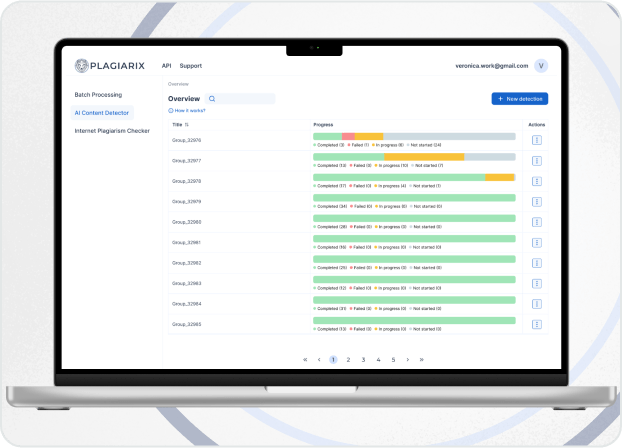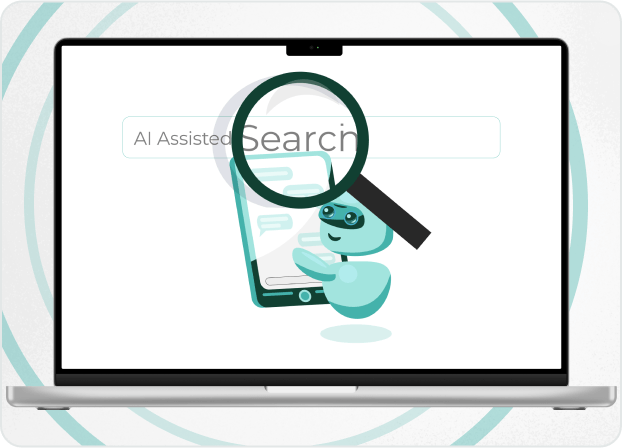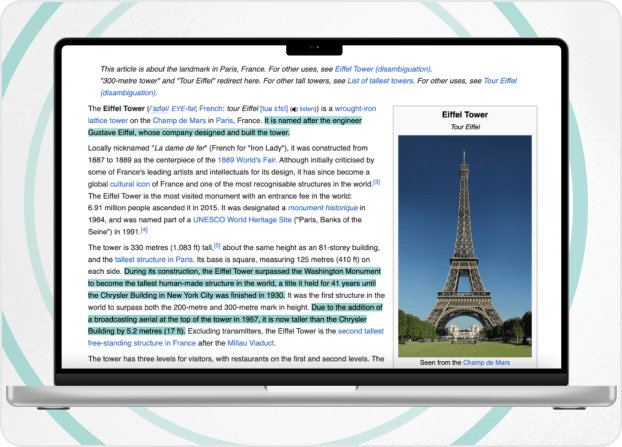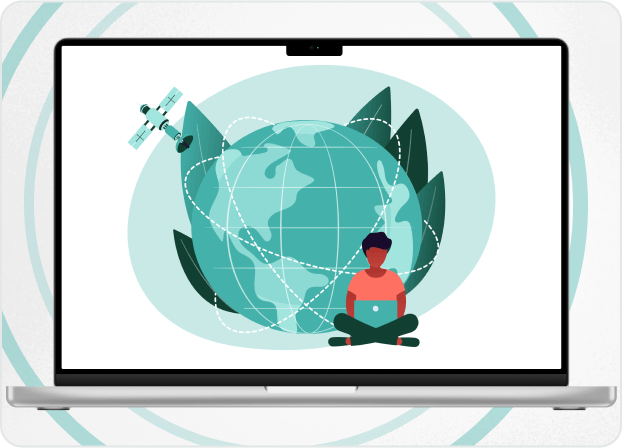
Expert’s Thoughts

"More and more companies look at cross-platform app development as the finest solution that ensures quick mobile application delivery, cost optimization and availability for the widest audience possible. However, business immediately faces challenges regarding the right choice among top programming frameworks for app development. Sik Data presents this blogpost as an overview of the five most popular and efficient technological frameworks for proper multiplatform mobile application development."
Yuri Svirid, PhD. — CEO Silk Data
Market Insights
The mobile industry has been demonstrating many tendencies in the past years, adding more context for businesses to plan their activities and strategies in the consumer market.
According to insights from STATS N DATA in 2022 the size of cross-platform development tools market reached 4 billion USD , while by the end of the first half of 2025 the number grew to 6,5 billion , indicating the annual growth rate of 20%.
At the same time, Biz4Solutions report of June 2024 indicated that over 87% of developers used or planned to use cross-platform development frameworks.
These numbers mean that cross-platform mobile development is now in increasing demand, but many problems occur, primarily with the companies’ ability to choose the right technological stack.
Silk Data gathered all its expertise to provide an overview of the most efficient and popular frameworks for multiplatform development and help you to make the right choice of tool.
Why Should You Choose Cross-Platform App Development?
Before diving into the tech specification, let’s answer a basic question of why you should go to cross-platform development?
Cross-platform development allows you to build a single app that runs seamlessly on both iOS and Android, using shared code and unified workflows. We can indicate three main factors that make this development approach preferable.

Resources Optimization
First, businesses applying to cross-platform development get an advantage of resources preservation.
Development of separate native apps for iOS and Android requires at least two dedicated teams, different codebases and longer testing cycles which leads to the necessity of additional labor, time and money costs, sometimes unbearable for business (especially for startups).
The advantages provided by cross-platform approach from the point of resources optimization are the following:
- Single codebase which means one-time app’s logic and UI development for two platforms at once.
- Unified maintenance implies updates and bug fixes apply to both versions simultaneously (though there’re cases when platform-specific bugs appear).
- Reusable UI components mean that being designed once they become adaptable for all platforms and devices, if the same UI is assumed for all platforms.

Cost Efficiency
Next is sufficient cost reduction provided by multiplatform development.
The above-mentioned report by Biz4Solutions says that companies that used cross-platform approach noticed a 30% reduction in costs of development processes and operations.
The situation appears through several reasons:
- Smaller development teams. There is no need for separate Android and iOS developers (though it is always better to have a couple of native developers who have wider knowledge and experience in the OS specifics).
- Reduced testing expenses. The development team has one quality assurance process for both mobile operational systems.
- Faster idea validation. The company can build MVP without doubling the budget.
Building an MVP is a work that takes additional time and resources, which are unavailable for small companies (especially with limited expertise).At the same time, technical validation of business ideas is crucial. Through that, it’s better to delegate MVP development to professionals.
Silk Data has been assisting businesses for years, providing efficient solutions for the requests regarding AI and mobile development along with IT consulting and outsourcing.

Reduced Time of Development and Deployment
In today’s competitive app market, speed is critical. Cross-platform development eliminates most of the weak spots of native approaches.
For example, there’s no need to wait for two separate builds for different operational systems, while one codebase means synchronized releases in all app stores.
5 Top Programming Frameworks for App Development
Now, considering the factors of cross-platform mobile development approach ‘s benefits, let’s meet the frameworks that make it possible.

Flutter: Google's UI Swiss Army Knife
The first member of the list is Flutter – an open-source software development framework created and released by Google in 2017.
According to Statista report of 2024, Flutter was used as a prier tool by 46% of world mobile development specialists in 2023, making it the most popular tool of cross-platform mobile development.
Such great popularity is a result of Flutter providing smooth, convenient, efficient and rather quick development of mobile applications available on both Android and iOS.
The reason for this is that Flutter uses Dart as its programming language with an AOT (Ahead-of-Time) compilation.
When the developer works with an application at its build phase, the initial Dart code is transformed into optimized low-level code (like ARM or x86) that can be easily processed directly by the device’s CPU.
In other words, the Flutter code is already prepared for being processed by mobile device without the interpretation that typically goes in parallel with the application’s work. It leads to smoother operationing and elimination of even the shortest latencies.
One more thing that ensures smooth performance of mobile apps written with Flutter is that it uses a declarative approach and widget-based architecture for UI building.
A widget-based architecture is a component-based approach where apps are built by combining individual, self-contained functional components (widgets). In the Flutter framework, widgets are structured into widget trees with a rather strict hierarchy of components. Changes in widgets’ state and specified approach of dealing with them are one of the pillars of Flutter’s success and popularity.
For greater performance, widgets are reconstructed only when necessary.
In essence, Flutter uses three parallel trees: Widget tree (marks the widget after its state (description) changed), Element tree (determines what needs updating, comparing the new widget tree with the previous version) and Render Object tree (updates the changed parts). Through this mechanism, all the UI changes go autonomously without any latencies.
And the last thing that helps in building, editing and fixing UI so quickly is Hot reload.
It’s a feature that demonstrates its greatest value within a debug mode, inserting updated source code files into the running Dart Virtual Machine. When the new code is received, the widget tree is rebuilt, changing the UI.
In fact, the Hot reload feature is the thing that makes smooth UI changes in Flutter-based apps possible.
As a result, Flutter eliminates traditional cross-platform trade-offs (slow performance, fragmented tools), enabling fast and high-quality app development for both Android and iOS — making it the top choice for startups and enterprises alike.
However, Flutter still has a few disadvantages that sometimes can be crucial for mobile projects:
- A Flutter-based application can easily stop compiling with the release of a new version of Flutter;
- New versions of Flutter are rare and sometimes they do not fully support the latest OS versions;
- Many library dependencies are written by enthusiasts so poorly supported. With the release of a new version of Flutter, they may stop working or interfere with the updating of other dependencies.

React Native: The JavaScript Workhorse
Silk Data appreciated the convenience and speed of product delivery provided by Flutter. We successfully demonstrated its full potential in one of our projects. Waste Removal Calendar is a full-scale mobile app that has been developed in less than 6 months with the help of Flutter. It is an intelligent solution for efficiently managing household waste removal.
Unlike Flutter with its native code compilation, React Native takes a different approach by leveraging JavaScript and a bridge to communicate with native platform components.
One of the key strengths of the framework is its use of JavaScript and React, which means easier work for web and mobile developers familiar with these technologies. Instead of compiling machine code ahead of time (like in Flutter), React Native apps run JavaScript in a special JavaScript Runtime environment , interpreting UI components into native views at execution.
In other words, the JS code is interpreted by JS bridge into the code understandable for native platforms to work with, and this interpretation runs permanently.
This allows developers to write code once and deploy it across both iOS and Android while maintaining a near-native user experience.
A major advantage of React Native is its vast ecosystem and community support. As it is based on JavaScript — one of the most widely used programming languages— developers benefit from extensive libraries, tools and third-party plugins. Additionally, React Native’s live reload and fast refresh features enable quick iterations during development, though they are not as quick as Flutter’s hot reload because of the JavaScript bridge.
Performance in React Native is optimized through native module integration , where computationally intensive tasks can be offloaded to platform-specific code (for example, Swift or Objective-C for iOS and Kotlin or Java for Android). However, complex animations or high-frequency updates cause latencies due to the above-mentioned asynchronous nature of interaction between JavaScript code and native code.
Despite these weaknesses, React Native remains a good choice for projects requiring rapid development with a familiar tech stack, particularly when targeting both mobile and web from a shared codebase (which is crucial for social media platforms ).

Kotlin Multiplatform: Share Logic, Keep the Feel
Kotlin Multiplatform is another framework for cross-platform development, enabling code sharing between platforms while preserving direct access to native APIs.
Unlike Flutter or React Native with their cross-platform UI abstractions — Kotlin Multiplatform prioritizes business logic reuse while enabling developers to leverage native UI frameworks (Jetpack Compose for Android and SwiftUI for iOS). This means the core app logic (like data layers and APIs) is written once in Kotlin and shared across platforms, while UIs can be tailored to each OS for pixel-perfect experiences. AT the same time, Kotlin doesn’t prevent sharing some UI logic, though complex interfaces typically remain platform-specific.
The core strength of Kotlin Multiplatform is its seamless integration with native ecosystems. By compiling Kotlin code to platform-specific binaries (JVM for Android, LLVM for iOS), KMP avoids the performance overhead of JavaScript bridges or WebViews. This makes it ideal for apps demanding full hardware access or low-level optimizations, such as gaming or real-time multimedia processing.
The framework excels in modular code sharing, letting teams reuse networking, data storage and business logic across Android, iOS and even desktop and web targets. Libraries like Ktor (for HTTP) and SQLDelight (for databases) are specially designed to work flawlessly in a multiplatform context. However, UI development still remains platform-specific, ensuring pixel-perfect native experiences without cross-platform compromises.
While Kotlin Multiplatform lacks built-in Hot reload (unlike Flutter), its interoperability with existing native projects makes it a good choice for gradual adoption. Companies like Netflix and McDonald’s use it to unify critical logic while retaining platform-specific UI investments.

Compose Multiplatform: Logic and UI with One Tool
The next tool is Compose Multiplatform that represents the vision for unifying cross-platform development under the Kotlin language. At its core, Compose Multiplatform employs the same declarative programming model used in Android UI development and in Native Android applications development. In essence, developers describe interfaces using Kotlin's concise syntax through composable functions, which the framework then translates into platform-appropriate rendering.
What distinguishes Compose Multiplatform from alternatives is its seamless integration with Kotlin Multiplatform's code-sharing capabilities. We know that Flutter requires Dart for all logic, or that React Native depends on JavaScript bridges. At the same time, Compose developers work entirely in Kotlin – from high-level UI components down to business logic and platform integrations. This unified language approach eliminates context switching while providing direct access to native APIs when needed.
Performance characteristics position Compose Multiplatform favorably against JavaScript-based solutions. Avoiding interpretation layers and bridge communication, applications achieve near-native responsiveness, particularly for animation-heavy interfaces.
Furthermore, one of the best traits of Compose Multiplatform is thatit is closely connected with the Jetpack Compose framework – an Android framework for UI development. It means that the native Android project built with the usage of Jetpack can be easily migrated into CMP.
As a result, native projects can easily be turned into cross-platform ones (though, there’re still some limitations connected with native-specific code parts or design systems).
However, the usage of Compose Multiplatform also comes with ecosystem considerations. As a relatively new entrant compared to Flutter or React Native (CMP for iOS was in beta till May 2025), Compose Multiplatform has a smaller collection of third-party libraries and community resources.
At the same time, the problem is not so critical, as there are many Android-dedicated libraries that can be fully used within both Kotlin and Compose Multiplatform frameworks.
Furthermore, available libraries are actively supported and updated,and this fact distinguishes CMP from many popular frameworks (first of all, Flutter).

Unity: Not Just for Games
Unlike traditional app frameworks like Flutter or React Native, Unity is a powerhouse designed primarily for real-time 3D content, making it one of the most popular tools for game development and AR/VR applications.
A defining feature of Unity is its high-fidelity rendering pipeline , powered by the C# scripting language and a robust physics engine. Developers create scenes and objects in a visual editor, then script interactions using C#, which compiles to native code via IL2CPP (special scripting backend for Unity aimed to covert C# code into C++ code and then to native code). This approach delivers advanced graphics and smooth frame rates, though it requires deeper hardware optimization than lightweight UI frameworks.
For mobile apps, Unity’s advantage lies in cross-platform deployment that provides native performance. Many AR/VR and classic mobile games leverage Unity’s ability to share core logic (like game mechanics and asset pipelines) while dealing with platform-specific optimizations. The engine also integrates with ARCore/ARKit and Metal/Vulkan APIs, enabling AR development and direct access to the device's GPU.
However, Unity’s complexity implies additional problems. Apps built with Unity tend to have larger binary sizes and longer initialization times compared to Flutter or React Native. It also lacks declarative UI tools which means that interfaces must be designed manually or with third-party plugins like UI Toolkit.
To make the choice easier, we summarized all the above-mentioned traits in the following table.
| Criteria | Flutter | React Native | Kotlin Multiplatform | Compose Multiplatform | Unity |
|---|---|---|---|---|---|
| Programming language | Dart | JavaScript | Kotlin | Kotlin | C# |
| Compilation /Execution | AOT (Ahead-of-Time) to native code | JS bridge interpretation | Compiled to native binaries (JVM/LLVM) | Compiled to native (JVM/LLVM for iOS/Desktop, JS for Web) | IL2CPP (C# → C++ → native) |
| UI Approach | Widget-based, declarative | Component-based | Platform-native UI (Jetpack/SwiftUI) | Declarative, Kotlin-based UI shared across Android/iOS/Desktop/Web | Manual/3D scene-based |
| Performance | High (direct native execution) | Moderate (bridge overhead) | High (direct native integration) | High (native rendering, no bridge overhead) | High (native rendering, no bridge overhead) |
| Strengths | - Fast development (Hot reload) - Smooth UI performance - Single codebase for iOS Android | - Large ecosystem - Web dev familiarity - Live reload | - Business logic sharing - Full native API access - No bridge overhead | - Single Kotlin codebase for UI + logic (with KMP) - Native performance - Seamless Android/Desktop integration | - Best for 3D/AR/VR - Cross-platform games - High-fidelity rendering |
| Weaknesses | - Larger app size - Limited native library | - Performance lag in complex animations - Bridge latency | - No built-in Hot reload - UI remains platform-specific | - iOS/Web support less mature (compared to Flutter) - Limited third-party libraries | - Large app size - Steep learning curve - No declarative UI tools |
| Best for | Startups, enterprises, high-performance apps requiring smooth UI | Projects needing shared web/mobile code, social media apps | Apps needing native UIs with shared logic (e.g., Netflix, McDonald’s) | Apps needing shared UI and logic (e.g., productivity tools, cross-platform MVPs) | Games, AR/VR apps, multimedia-intensive applications |
Conclusion
Cross-platform development is the best choice for 80% of business apps in 2025, offering cost savings, faster launches, and easier scaling.
For most businesses, Flutter and React Native remain the safest bets in 2025 due to their maturity, performance and developer adoption. However, if your project has unique demands like gaming features, native UI precision or web compatibility, you should explore Unity or Kotlin Multiplatform accordingly.
If you are still unsure which framework fits your vision, Silk Data’s team specializes in cross-platform development, helping businesses like yours efficiently build scalable and high-performance apps.
Our Solutions
We work in various directions, providing a vast range of IT and AI services. Moreover, working on any task, we’re able to provide you with products of different complexity and elaboration, including proof of concept, minimum viable product, or full product development.
























